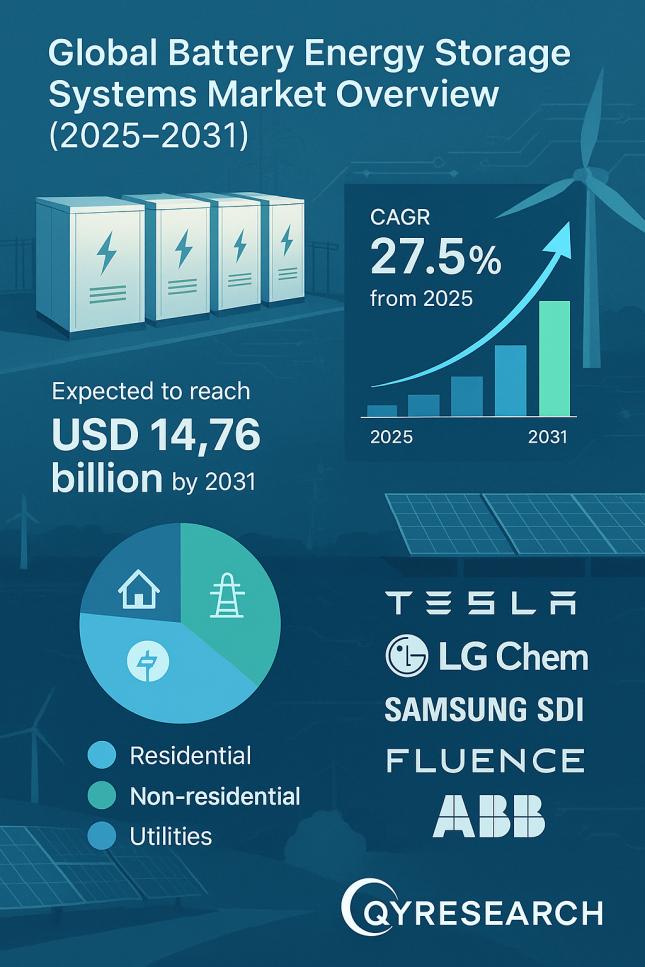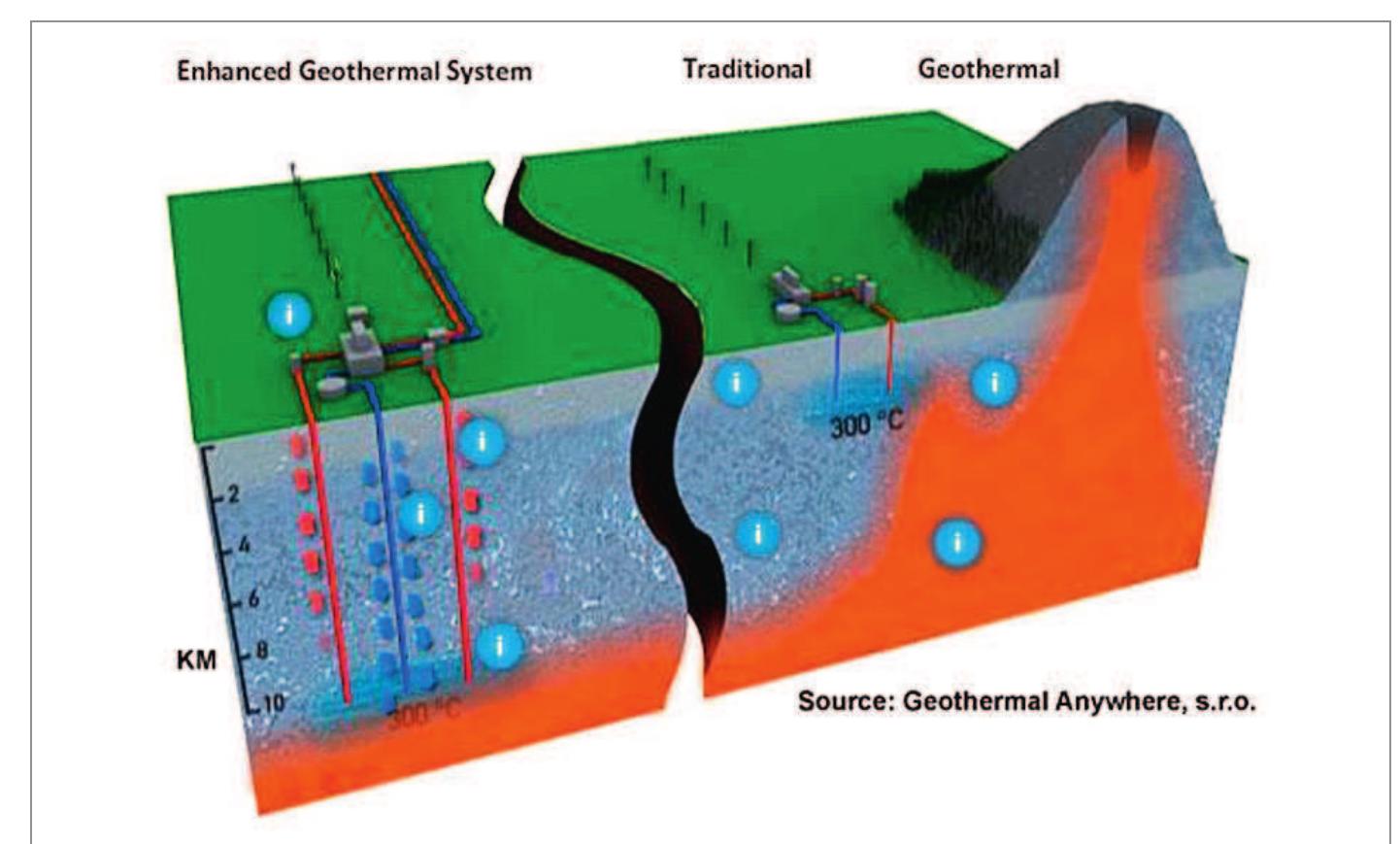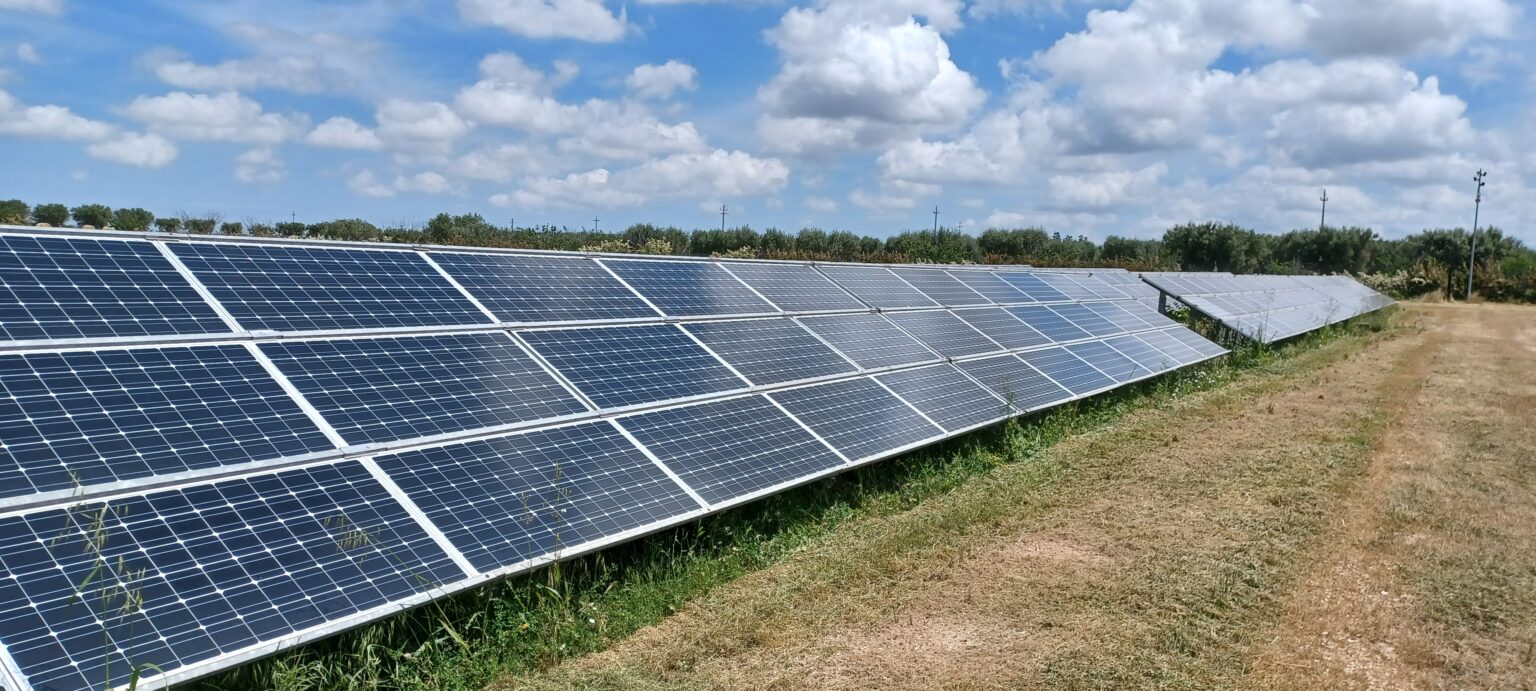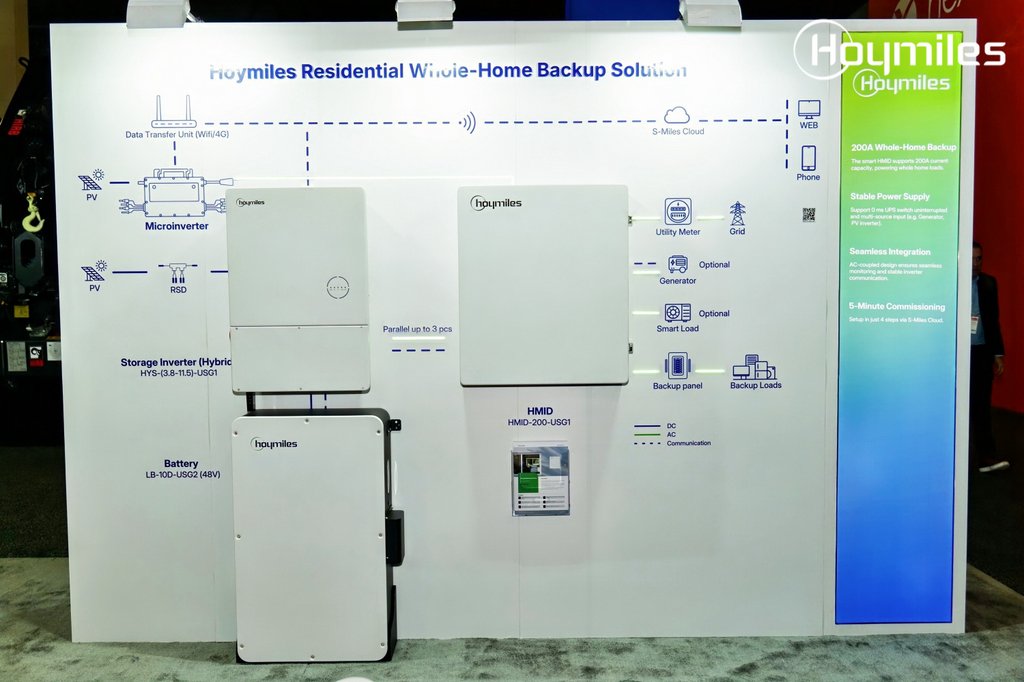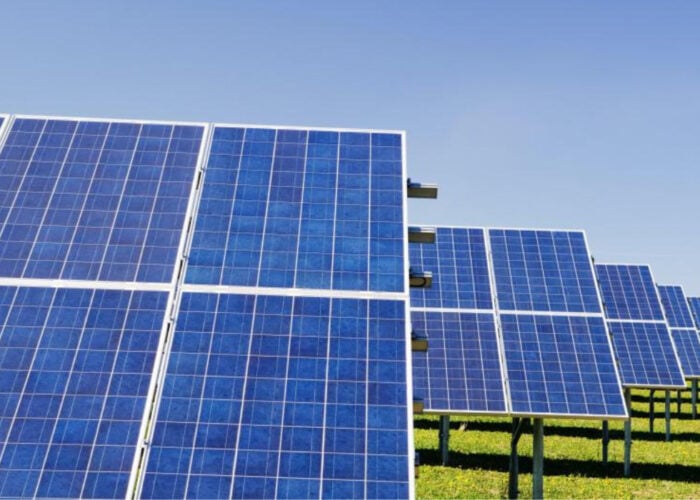Report on the Advanced Superconducting Magnetic Energy Storage Technology Market
Executive Summary: Aligning Energy Innovation with Sustainable Development Goals
The global market for Advanced Superconducting Magnetic Energy Storage (SMES) technology is poised for significant growth, driven by the global imperative to achieve the Sustainable Development Goals (SDGs). This technology is critical for modernizing energy infrastructure and facilitating the transition to renewable energy sources. The market’s expansion directly supports key global objectives, particularly in the areas of clean energy, resilient infrastructure, and climate action. This report provides a comprehensive analysis of the market dynamics, segmentation, and competitive landscape, with a significant focus on its role in advancing sustainability.
Market Contribution to Global Sustainability Targets
The development and deployment of SMES technology are intrinsically linked to the achievement of several SDGs. Its primary function—providing instantaneous, high-power energy storage—is essential for creating a more sustainable and reliable global energy system.
SDG 7: Affordable and Clean Energy
SMES systems are instrumental in stabilizing power grids, a critical requirement for integrating intermittent renewable energy sources such as solar and wind. By ensuring grid reliability and power quality, this technology accelerates the transition away from fossil fuels, making clean energy more accessible and affordable for all.
SDG 9: Industry, Innovation, and Infrastructure
The technology represents a significant innovation in energy infrastructure. Its adoption fosters the development of resilient, sustainable, and technologically advanced power systems. Investment in the SMES market contributes to building robust infrastructure capable of supporting sustainable industrialization and economic growth.
SDG 11 and SDG 13: Sustainable Cities and Climate Action
By enhancing grid efficiency and enabling a higher penetration of renewables, SMES technology directly contributes to reducing greenhouse gas emissions, a core objective of SDG 13 (Climate Action). Furthermore, a stable and clean energy supply is the backbone of sustainable cities and communities (SDG 11), powering essential services and improving the quality of urban life.
Market Segmentation Analysis
The market is segmented to provide a clear understanding of its structure, key participants, and application areas, which are all pivotal in driving progress toward the SDGs.
Key Industry Stakeholders
The leading organizations advancing this technology include:
- Fujikura
- Hyper Tech Research
- Southwire
- Sumitomo Electric Industries
- General Cable Superconductors
- Nexans SA
- ASG Superconductors SpA
- Luvata U.K.
- SuNam
- Superconductor Technologies
- American Superconductor Corporation
- Super Power Inc
- Bruker Energy & Supercon Technologies
Segmentation by Technology Type
The market is categorized based on the core superconducting materials used:
- Low-Temperature Superconductors (LTS)
- High-Temperature Superconductors (HTS)
Segmentation by Application
The primary applications highlight the technology’s impact on sustainable infrastructure:
- Power System: Enhancing grid stability and integrating renewable energy sources.
- Industrial Use: Ensuring power quality for sensitive manufacturing processes.
- Research Institution: Advancing innovation in energy storage and materials science.
- Others: Emerging applications in transportation and defense.
Global Market Dynamics and Regional Outlook
Market Trends and Opportunities
The increasing global demand for reliable and clean energy solutions is the principal driver of the SMES market. Opportunities are expanding as governments and industries prioritize decarbonization and grid modernization in line with SDG commitments. Technological advancements in high-temperature superconductors are expected to reduce costs and broaden the scope of applications, presenting significant growth opportunities.
Regional Analysis
Growth is assessed across key economic regions, with development influenced by regional policies on energy, technology, and environmental sustainability.
- North America: USA, Canada, Mexico
- Asia-Pacific: China, Japan, Korea, India, and Southeast Asia
- The Middle East and Africa: Saudi Arabia, the UAE, Egypt, Turkey, Nigeria, and South Africa
- Europe: Germany, France, the UK, Russia, and Italy
- South America: Brazil, Argentina, Columbia
Strategic Insights and Report Highlights
Key Findings of the Market Analysis
The comprehensive research provides critical insights into the market’s trajectory.
- Accurate market size and compound annual growth rate (CAGR) projections for the forecast period.
- In-depth evaluation of growth potential in major segments and geographical areas, framed by their contribution to sustainability.
- Detailed company profiles of the top players in the global SMES market.
- Comprehensive analysis of innovation, market trends, and technological developments.
- Dependable analysis of the industry value chain and supply chain.
- A thorough examination of growth drivers, limitations, and future prospects.
Strategic Implications for Stakeholders
Understanding the dynamics of the SMES market is crucial for stakeholders seeking to align their business strategies with global sustainability trends. The analysis enables companies to identify growth segments, develop effective long-term strategies, and capitalize on the expanding opportunities in the clean energy and sustainable infrastructure sectors. This strategic knowledge supports informed decision-making related to product development, market expansion, and investment in technologies that underpin a sustainable future.
1. Which SDGs are addressed or connected to the issues highlighted in the article?
The article on the “Advanced Superconducting Magnetic Energy Storage Technology Market” primarily connects to the following Sustainable Development Goals by focusing on technological advancement, energy solutions, industrial growth, and global collaboration.
- SDG 7: Affordable and Clean Energy – The core technology discussed, superconducting magnetic energy storage, is directly related to improving the efficiency and reliability of power systems, which is crucial for integrating renewable energy sources.
- SDG 9: Industry, Innovation, and Infrastructure – The article is centered on an “Advanced… Technology,” highlighting “innovation possibilities,” “technological advancements,” and the industrial application of this technology. It discusses market dynamics, company profiling, and strategies for growth in a high-tech industrial sector.
- SDG 8: Decent Work and Economic Growth – The report analyzes market size, growth potential, revenue, and investment opportunities. This focus on market expansion and economic productivity aligns with the goal of sustaining economic growth.
- SDG 17: Partnerships for the Goals – The article explicitly mentions that the report will cover “key agreements, collaborations, and global partnerships soon to change the dynamics of the market on a global scale,” which is the essence of this goal.
2. What specific targets under those SDGs can be identified based on the article’s content?
Based on the focus of the article, the following specific targets can be identified:
SDG 7: Affordable and Clean Energy
- Target 7.2: By 2030, increase substantially the share of renewable energy in the global energy mix. The article’s focus on energy storage technology is critical for managing the intermittency of renewable sources like solar and wind, thereby enabling a higher share of them in power systems. The application segment “Power System” directly supports this.
- Target 7.3: By 2030, double the global rate of improvement in energy efficiency. Advanced energy storage systems contribute to grid stability and reduce energy loss, which is a key component of improving overall energy efficiency.
SDG 9: Industry, Innovation, and Infrastructure
- Target 9.4: By 2030, upgrade infrastructure and retrofit industries to make them sustainable, with increased resource-use efficiency and greater adoption of clean and environmentally sound technologies and industrial processes. The article discusses an advanced, clean technology for energy infrastructure.
- Target 9.5: Enhance scientific research, upgrade the technological capabilities of industrial sectors in all countries, in particular developing countries, including, by 2030, encouraging innovation. The report’s purpose is to provide a “comprehensive investigation of innovation,” analyze “emerging product lines,” and evaluate “innovation possibilities.”
SDG 8: Decent Work and Economic Growth
- Target 8.2: Achieve higher levels of economic productivity through diversification, technological upgrading and innovation. The entire article is about a high-tech market, and it highlights “technological advancements” and “innovation” as drivers of market expansion and revenue growth.
SDG 17: Partnerships for the Goals
- Target 17.17: Encourage and promote effective public, public-private and civil society partnerships, building on the experience and resourcing strategies of partnerships. The article’s mention of covering “key agreements, collaborations, and global partnerships” directly relates to the formation of strategic partnerships to advance the technology and market.
3. Are there any indicators mentioned or implied in the article that can be used to measure progress towards the identified targets?
The article, being a promotion for a market research report, implies several market-based and economic indicators that can be used to measure progress towards the identified targets.
For SDG 7 & 9 (Targets 7.2, 7.3, 9.4, 9.5):
- Market Size and Growth of Clean Energy Technologies: The article provides “accurate market size and compound annual growth rate (CAGR) predictions” for the energy storage technology market. Growth in this market is a direct proxy for the adoption of technologies that support renewable energy and efficient infrastructure.
- Investment in Innovation: The report’s “comprehensive investigation of innovation,” analysis of “emerging product lines,” and “scope of New product development” imply that tracking investment, new patents, and product launches in this sector are key indicators of progress.
- Adoption in Key Sectors: The segmentation by application (“Power System,” “Industrial Use”) allows for tracking the adoption rate of this technology in critical infrastructure sectors.
For SDG 8 (Target 8.2):
- Economic Performance Metrics: The article states the report assesses “CAGR, gross margin, revenue, price, production growth rate, volume, value, market share.” These are direct economic indicators of the productivity and growth of this high-tech industrial sector.
For SDG 17 (Target 17.17):
- Number and Scale of Partnerships: The report’s intent to cover “key agreements, collaborations, and global partnerships” suggests that the number and value of such partnerships within the industry can be used as a direct indicator of collaborative efforts.
4. Table of SDGs, Targets, and Indicators
| SDGs | Targets | Indicators Identified in the Article |
|---|---|---|
| SDG 7: Affordable and Clean Energy | 7.2: Increase the share of renewable energy. 7.3: Improve energy efficiency. |
Market size, growth (CAGR), and adoption rate of advanced energy storage technology, particularly in the “Power System” application segment. |
| SDG 9: Industry, Innovation, and Infrastructure | 9.4: Upgrade infrastructure and adopt clean technologies. 9.5: Enhance scientific research and encourage innovation. |
Analysis of “technological advancements,” “emerging product lines,” and “innovation possibilities.” Company profiling to evaluate the scope of new product development. |
| SDG 8: Decent Work and Economic Growth | 8.2: Achieve higher levels of economic productivity through technological upgrading and innovation. | Market metrics such as “revenue,” “production growth rate,” “volume,” “value,” and “market share” for the advanced technology sector. |
| SDG 17: Partnerships for the Goals | 17.17: Encourage and promote effective partnerships. | Number and scale of “key agreements, collaborations, and global partnerships” within the industry. |
Source: openpr.com


